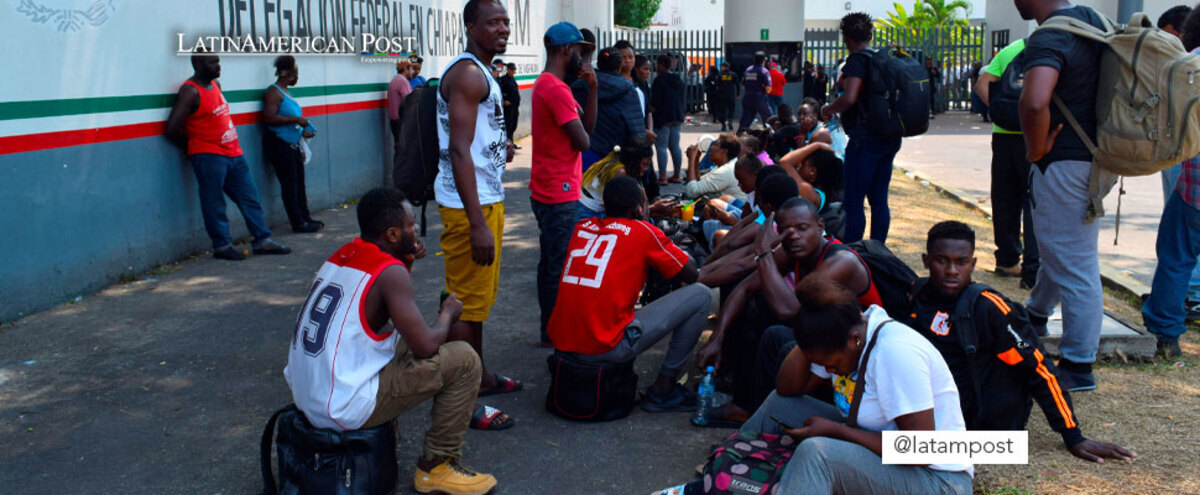Humanitarian Crises in the World: Panorama of 2022
Since December 2021, the Financial Needs for Humanitarian Aid have Grown by 21%, According to UN Reports. Hunger, Natural Disasters, Conflicts and Wars are Situations Faced by Around 308 Million People.

Photo: Reuters – Reference Image
LatinAmerican Post | María Fernanda Ramírez Ramos
Listen to this article
Leer en español: Crisis humanitarias en el mundo: panorama del 2022
Ahmed, 10 years old, must walk 5 hours a day in search of food and water for his family due to the drought in Somalia; Camila has left all her family and friends to seek better opportunities outside of Venezuela; Halima has had to drop out of school in Afghanistan, and Abdullah hasn't slept for several days, hiding, fearing gunfire in Yemen. These are just some scenarios that more than 300 million people face every day.
In December 2021, it was estimated that there were around 296 million people in need of humanitarian assistance in 63 countries around the world, according to United Nations estimates. However, the latest update, carried out at the end of August 2022, has increased the number of people in need to 308 million. This situation is largely due to the crisis in Ukraine, and the constant conflicts in Burkina Faso, Ethiopia, Kenya, Madagascar, Venezuela and Yemen, mainly. Likewise, the natural disasters in Pakistan, with heavy flooding, have required a special response plan from humanitarian organizations.
Humanitarian crises in Latin America
Of the 32 countries that are part of the humanitarian and emergency response plans, indicated in the United Nations report, 6 are part of Latin America: Colombia, El Salvador, Haiti, Honduras, Guatemala, and Venezuela. Right now, the refugee crisis in Venezuela is one of the most worrying situations. There are an estimated 8.4 million people in need.
However, these are not the only countries in the region where there are worrying human situations. According to Human Right Watch, in its 2022 report, in various Latin American countries such as Ecuador, Colombia, Mexico, Brazil, Peru, Bolivia, Cuba, Guatemala and El Salvador, and many others, serious human rights violations are being committed. both by the State and by criminal groups. Increase in sexual violence, attacks on environmental defenders and journalists, repression of social protest, threat to communities in areas of exploitation of natural resources and impunity in the justice systems seem to be a common denominator.
The backlash of COVID-19: health crisis
If you think that COVID-19 is a thing of the past, nothing further than this. Its effects are still present and are affecting the most vulnerable. After the health crises caused by this pandemic, health services in the most vulnerable regions were weakened. There have been delays in vaccination plans, due to diseases such as tuberculosis, polio, or measles. Likewise, HIV or Malaria detection tests were no longer carried out at many points. On the other hand, conflicts also worsen the health of the population. For example, it is estimated that in Yemen "only 51% of health facilities across the country are fully operational due to the conflict".
Another fundamental point is the mental health of people who experience catastrophic situations. "Millions of people around the world suffer and lack quality care capable of treating and healing their invisible wounds," says the organization Doctors Without Borders, who make a constant call for help to increasingly prioritize mental health. " We denounce that experiencing conflicts, catastrophes, violent acts, abuse, loss of loved ones and isolation can lead to suicidal behavior. Suicide rates are also high in people who live with a mental disorder, in vulnerable and discriminated groups, such as people refugees and migrants, indigenous peoples, the LGTBI+ collective, and the prison population," they point out.
Climate change: the growing threat
Tropical cyclones, floods, heat waves and extreme droughts are the scenario that many people are already experiencing today. The effects of climate change are exacerbating existing humanitarian crises and generating new ones. In 2020, a total of 389 climate-related disasters were recorded, killing 15,080 people, affecting another 98.4 million, and inflicting $171.3 billion in economic damage.
One of the greatest consequences of these effects is the increase in hunger and the situation of food insecurity in various regions, where soils are no longer productive and vital resources such as water are scarce. Nearly 50 million people are today in an emergency due to food insecurity. "We are in the midst of a growing hunger crisis. Conflict and violence, the climate crisis, increased displacement and the secondary impacts of the pandemic are some of the many factors that have caused hunger levels to rise in recent years," says the United Nations.
We recommend you read: Droughts in Latin America: Living with Less Water?
Money is not enough
As for resources, "as of August 31, the funding registered for the GHO 2022 reached 16.8 billion dollars or 34% of the needs," says the United Nations report entitled Global Humanitarian Overview. It is estimated that 49.6 billion dollars would be needed to help 206 million of the 308 million people in need worldwide. It is a figure that does not seem easy to meet, since $23.7 million dollars have been raised for humanitarian financing, a low amount to meet the needs of hunger, assistance in the midst of conflict and displacement, and mitigation of the effects of climate change.





